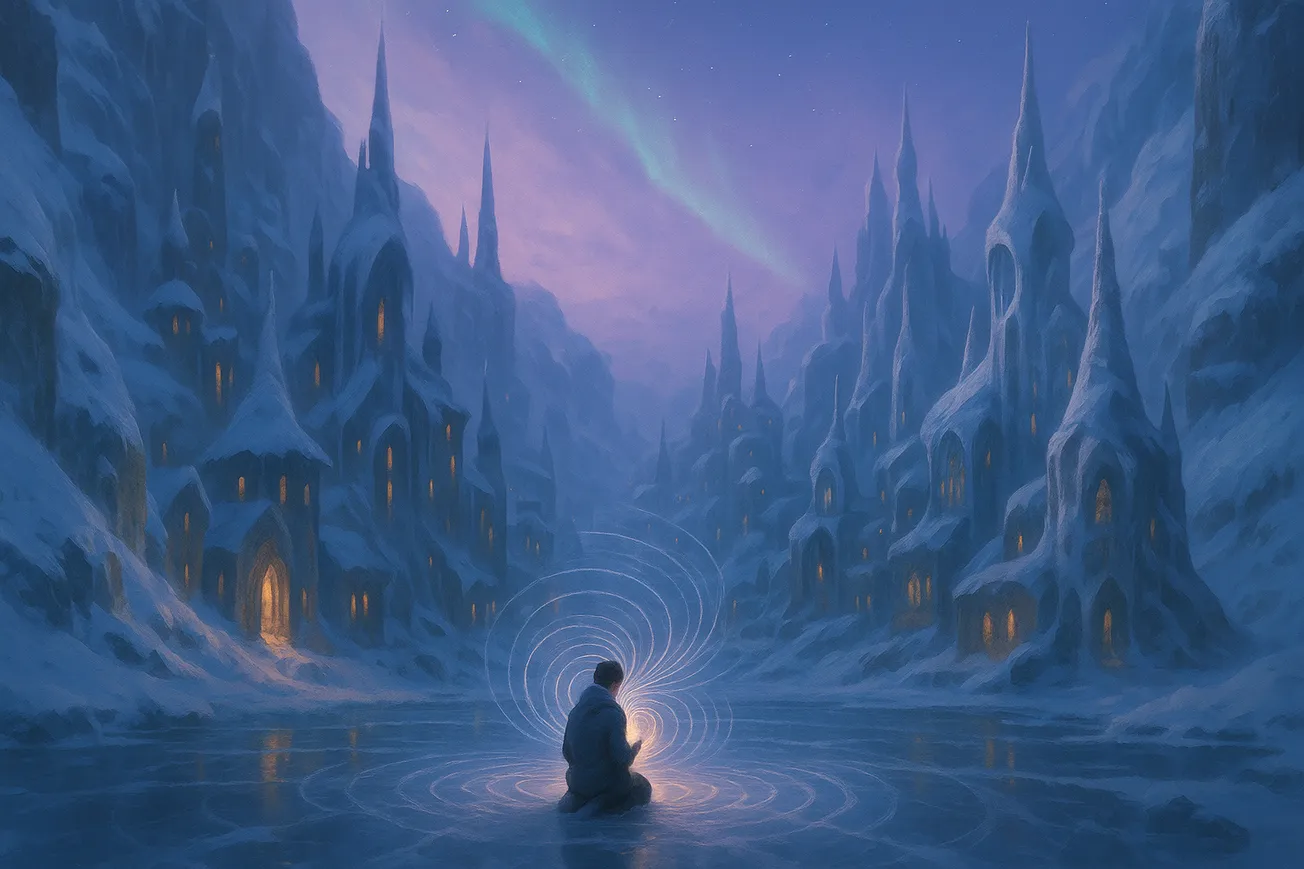🌈 The Fractal Story Engine | Society & Future | (16) SF-003-F1
In the tundra city of Rü, every child was born with a melody sealed in their chest. These melodies, called kehl, were not songs to be sung, but seeds to be guarded, shaped in secret by breath alone. For the first eighteen cycles of snow, a child could hum only inwardly, tuning their kehl against wind, wood, and the long metallic whine of ice stretching across stone.
To speak aloud before eighteen was to fracture the kehl permanently. It would splinter into dissonance and static, rendering the bearer mute forever. This law was not enforced by guards, but by the architecture of Rü itself. The city heard everything. The walls, carved from glacier bone, recorded sound. If a syllable was uttered before the rite, the ice would echo it for eternity, shame crystallized into sound.
So the children listened. To sleet against windowglass. To the scrape of boots on frozen boards. To the rhythm of breath beneath blankets during the Longdark. Their voices sharpened inward, carved like flutes in bone, waiting for a mouth that could bear them.
Miro, the lastborn of the slatcarvers, had a kehl that hurt. It pressed against his ribs like an unfinished sculpture. At twelve, he began sculpting silence itself: bowls that absorbed echoes, flutes that played the wind back to itself. He once carved a cathedral from snow and watched it melt in a single afternoon, taking something from his lungs as it vanished.
He dreamed, often, of shouting underwater. The bubbles would rise and freeze before reaching the surface.
The day before his eighteenth cycle, he was summoned to the Listening Hall. Every kehl was awakened here by the elder conductor. No applause. No celebration. Only a single room of glass threads, each tied to a tuning root buried beneath the Hall. The conductor placed a pearl of ice on Miro’s tongue and nodded.
When he spoke, his kehl emerged not as song, but as texture. The sound of cloth torn in slow reverence. A glacial hum that warped the walls slightly, making the air shimmer with density.
The conductor stepped back.
“You speak in architecture,” she said, voice the tone of carved bells. “You reshape the space around others.”
Miro nodded, and the air folded neatly.
Over the next weeks, he spoke a house into being. Rooms that folded grief into the grain of the floorboards. Windows that sang gently open in the mornings. A bed that whispered dreams into the pillowcase. He was invited to build the new observatory, to teach others how to modulate load-bearing memory.
But he did not teach. Not yet.
Instead, he began visiting the children’s quarters at dusk. He brought no tools. He simply sat with them, unmoving, as they listened together to the draft in the heating ducts. As the youngest adjusted their inner kehl in resonance.
One child, who had never blinked on rhythm with anyone else, began to match his breath.
Another began humming inwardly in pulses that softened the harshness of her dreams.
No one spoke.
But the room began to curve.
Later, someone would name the phenomenon: passive resonance. Others would write about the architecture of unspoken instruction. Miro would receive an archive code. A tower would be built bearing his modulation pattern.
But in those early nights, what mattered was the feeling that each child had built something, just by listening beside someone who had once known the ache of holding a voice inside too long.
And in the far edge of the Listening Hall, where retired conductors carved memory into sheet ice, a new thread was added:
A kehl that never broke, because it was never forced.
A voice that changed nothing, except the way others heard their own.

